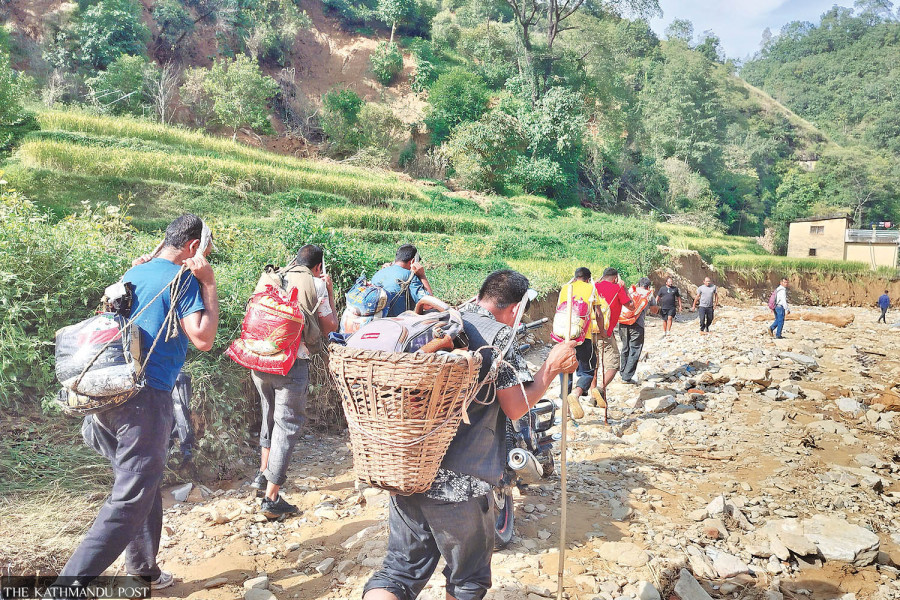Editorial
Post-disaster mess
Those displaced by natural disasters are struggling as the authorities seem incapable of coming to their help.
People in 71 local units across 20 districts in Nepal were affected by rain-induced disasters in the last week of September. Landslides and floods triggered by incessant rains resulted in massive loss of human lives and infrastructure in Bagmati Province, including the Kathmandu Valley, as well as in the hilly districts of Koshi Province. Over 250 people died as several settlements were swept away. Altogether, around 391 people were killed nationwide in water-induced disasters in the monsoon season that started in the second week of June. The disaster victims were still struggling to come to terms with their losses when people across the country were celebrating Dashain and Tihar.
Now, a tougher time awaits disaster victims as the country heads into a chilly winter. The displaced people are staying under flimsy tents and tarpaulins, even as the authorities seem incapable of shifting them to temporary huts that could offer them some succour from the biting cold until their permanent houses are built. In his address to the country on October 23, nearly a month after the worst of monsoon disasters, Prime Minister KP Sharma Oli directed the agencies concerned to prioritise the task of assessing damages and making temporary huts for the displaced people. In the same address, he conceded that government bodies hadn’t even assessed damages from the earthquakes that struck Jajarkot, Rukum West, Bajhang, Doti and Bajura a year ago, let alone carry out reconstruction work. The government had announced a total of Rs50,000 in two instalments to build temporary houses for those displaced in the quakes. According to the state-run newspaper The Rising Nepal, the people of Jajarkot district are yet to get the second instalment.
Last winter, elderly people, children, pregnant women and those with chronic health problems suffered a lot in Jajarkot as the quake survivors had to live under flimsy tents for months due to the delay in reconstruction and rehabilitation works. When the mountainous districts witnessed rains during the winter, cold-related ailments including pneumonia caused serious problems, especially for small kids and elderly people. Owing to what can only be described as government apathy, hundreds of those displaced by natural disasters years ago can be seen staying under makeshift huts on river banks or in forest areas in various parts of the country.
The problem is not always lack of resources. Mismanagement and the government’s failure to properly and timely mobilise available resources is also a reason behind the victims’ sorry plight. For instance, 77 institutional and individual donors have contributed over Rs1.87 billion to the Prime Minister’s Natural Disaster and Rescue Fund as of last week. Even in the past, disaster victims would be shivering under makeshift structures while the government would be sitting on the money donated in their name.
As Nepal is vulnerable to natural disasters such as earthquakes, landslides, floods, glacial lake outbursts and lightning, relevant agencies must be well equipped to help the needy people on time. The situation won’t improve unless there are mandatory provisions with strict timelines to accomplish vital tasks such as assessing damages, shifting the displaced people to temporary huts, distributing money to build permanent houses and for rehabilitation. In the process, the role and responsibility of provinces and local units can be broadened. Also, by coming to the help of the people in times of crisis, the provincial and local governments have an opportunity to prove their relevance as self-governing entities.




 10.12°C Kathmandu
10.12°C Kathmandu














